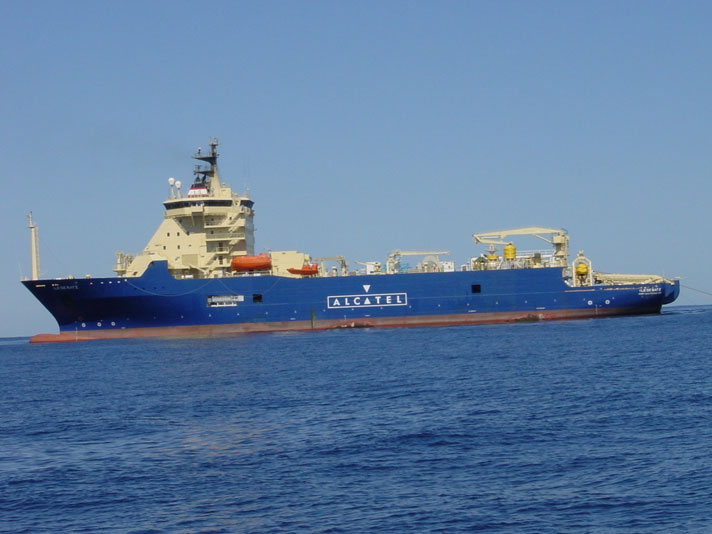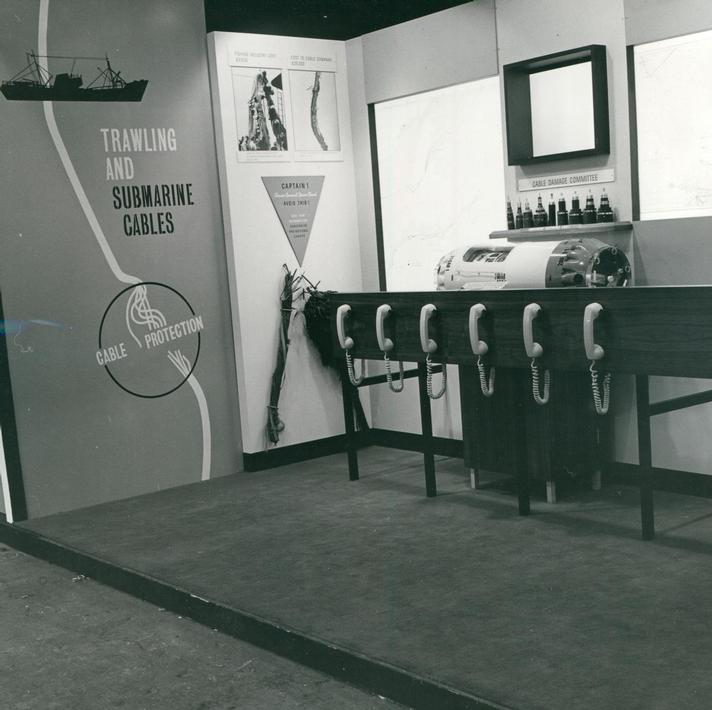PORTSMOUTH, United Kingdom — The International Cable Protection Committee (ICPC), the world’s leading organisation promoting submarine cable protection and resilience, came to Valentia Island, Ireland to hold its annual three day meeting of the Executive Committee from 8-10 October , and then co-organised the Valentia Island Subsea Cable Security and Resilience Symposium at the historic Valentia Island Transatlantic Cable Station in Valentia, Co. Kerry from 10-12 October.
Ireland’s Tánaiste, Minister for Foreign Affairs and Minister for Defence, Micheál Martin TD gave an opening address to the Symposium, highlighting the importance of resilience of key infrastructure on the seabed. More than 85 representatives from ten countries joined in dialogue from across industry, governments and academia.
The Symposium, including numerous speakers from the ICPC, highlighted key challenges and risks to cables across spatial, environmental and human risks. The discussions took place under Chatham House rules facilitating open dialogue between delegates on resilience, security, and the primary challenges facing the modern submarine cable industry.
The ICPC supports the proposal of the Valentia Island Development Company in collaboration with Kerry County Council, and the government of Newfoundland, to achieve UNESCO World Heritage Status to preserve the cable history on both sides of the Atlantic. ICPC is making a donation to the restoration of the Cable Station, First Message Building and Slate Yard and is exploring further ways to support the bid.
Mr. Graham Evans, ICPC Chairman, said ‘The ICPC was proud to support this important initiative that brought together governments, the global submarine cable industry, and academics to explore the topic of the resilience of communications beneath the oceans. The universal importance of those first pioneering steps in transatlantic telegraphic communications cannot be understated, and it has led to the modern interconnected world that we live in today. It is particularly fitting that the symposium was held in this historic and important location.’
Mr Leonard Hobbs of the Valentia Transatlantic Cable Foundation, said ‘In 1858, Europe and North America were connected for the first time via the undersea transatlantic telegraph cable, which connected Valentia in Co Kerry to Trinity Bay in Newfoundland, reducing the communication times from weeks to minutes, in an achievement now considered the 19th century equivalent of putting a man on the moon and was regarded as the Eighth Wonder of the World at the time. The Foundation warmly welcomed the members of the ICPC and the other international delegates to the Symposium in this historic place where this subsea cable industry began over 150 years ago.’
About the ICPC: To promote submarine cable protection and resilience, the ICPC works with its members, governments, international organisations, other marine industries, and the scientific community to: mitigate risks of natural and human damage to cables; develop recommendations and best practices for industry and governments throughout the cable project life cycle; promote scientific research addressing how cables exist in the marine environment; and promote the rule of law for the oceans. The ICPC has more than 230 member organisations from 70 countries who build, operate, and maintain submarine telecommunications and power cable infrastructure. To learn more about the ICPC, visit: www.iscpc.org or send an e-mail to secretariat@iscpc.org.











 Cable Carousel
Cable Carousel Cable Plough Launch
Cable Plough Launch Launching an ROV
Launching an ROV Inspection of Optical Fibre
Inspection of Optical Fibre Recovering an ROV
Recovering an ROV René Descartes
René Descartes Segero
Segero Teneo
Teneo MV Aniek
MV Aniek Ile de Batz
Ile de Batz 1975 - ICPC Cable Protection Exhibit at Liningrad Fishing Exhibition
1975 - ICPC Cable Protection Exhibit at Liningrad Fishing Exhibition 1998 - Plenary Meeting - Orlando
1998 - Plenary Meeting - Orlando 1969 - Cable Damage Committee Exhibition Stand at Oceanolgy Conference 1969 (Image 4)
1969 - Cable Damage Committee Exhibition Stand at Oceanolgy Conference 1969 (Image 4) 1970- British Post Office and Cable and Wireless Cable Protection Exhibit at 'Scottish Fisheries 1970' Exhibition
1970- British Post Office and Cable and Wireless Cable Protection Exhibit at 'Scottish Fisheries 1970' Exhibition 1988 - AT&T / Transoceanic Cableship Company Cable Ship - CS Longlines
1988 - AT&T / Transoceanic Cableship Company Cable Ship - CS Longlines